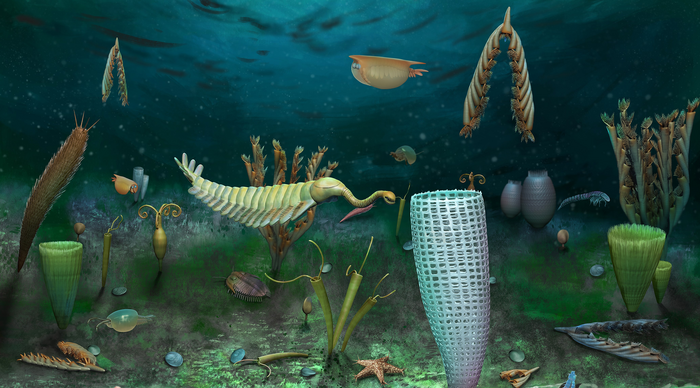In a thrilling discovery, a team of researchers led by the Nanjing Institute of Geology and Palaeontology of the Chinese Academy of Sciences (NIGPAS) has uncovered an unusually well-preserved "Marine Dwarf World" from 462 million years ago at Castle Bank, Wales.
This remarkable discovery is made up of over 150 species, most of them miniaturized in size.

The Cambrian Period
Castle Bank, located in Powys, is a distinctive site that offers an unparalleled glimpse into the evolution of life by preserving soft tissue and entire organisms.
The area is home to Burgess Shale-type faunas, which are renowned sites named after the fossil-bearing deposit in Canada.
However, most of these sites date back to the Cambrian period (542-485 million years ago), creating a gap in our knowledge of marine life evolution in subsequent periods.
The Cambrian period is considered to be a significant period in Earth's history because it marked the first appearance of a diverse array of complex animal life, known as the Cambrian explosion.
During this time, many different types of organisms appeared in the fossil record, including the first arthropods, chordates, and echinoderms.
Unlike most of these sites, the Castle Bank site is from the middle of the succeeding Ordovician Period, dating back 462 million years ago.
It is comparable to the best Cambrian deposits in terms of the diversity of fossils and exceptional preservation levels. In 2020, Dr. Joe Botting and Dr. Lucy Muir discovered this new assemblage near Llandrindod, central Wales.
Read Also : Butterfly Inspired: The World's Lightest Paint Offers Eco-Friendly Alternative to Pigment-Based Paint
150 Species at Castle Bank
Over 150 species have been found so far at Castle Bank, with the vast majority of them previously unknown to science.
Despite their small size, ranging from 1-3 mm, many of the animals exhibit intricate details, including internal organs, digestive systems, nerves, and limbs of tiny arthropods, as well as delicate filter-feeding tentacles.
This level of preservation is similar to the best Cambrian faunas but was previously unseen in the Ordovician, according to the researchers.
The Middle Ordovician fauna is a diverse group of marine organisms, including arthropods, worms, sponges, and starfish, as well as unexpected finds like goose barnacles, cephalocarid shrimps, and potentially an insect-like marine relative.
The Ordovician period saw a surge in animal diversity and the emergence of familiar ecosystems, but a knowledge gap existed between Cambrian and Palaeozoic faunas. This new Burgess Shale-type fauna from Castle Bank can help fill this gap and shed light on the transition from Cambrian-style to modern ecosystems.
This remarkable discovery is a significant contribution to our understanding of marine life's evolution and provides a fascinating glimpse into the diversity of life during the Middle Ordovician period.
The findings of the team were published in the journal Nature Ecology & Evolution.
Related Article : Engineers Create One of the Fastest, Most Efficient Amphibious Robots Inspired by Flippers and Centipedes





